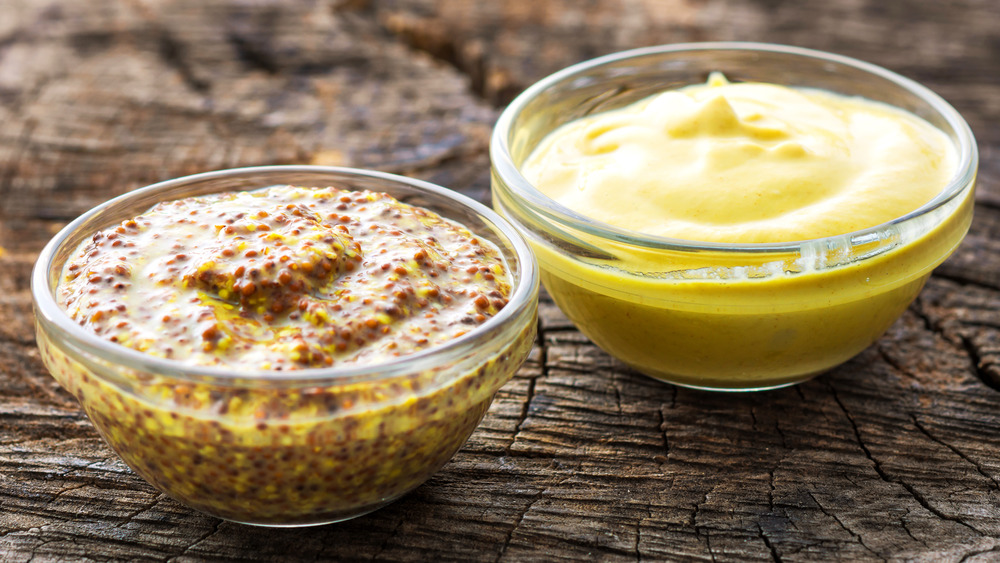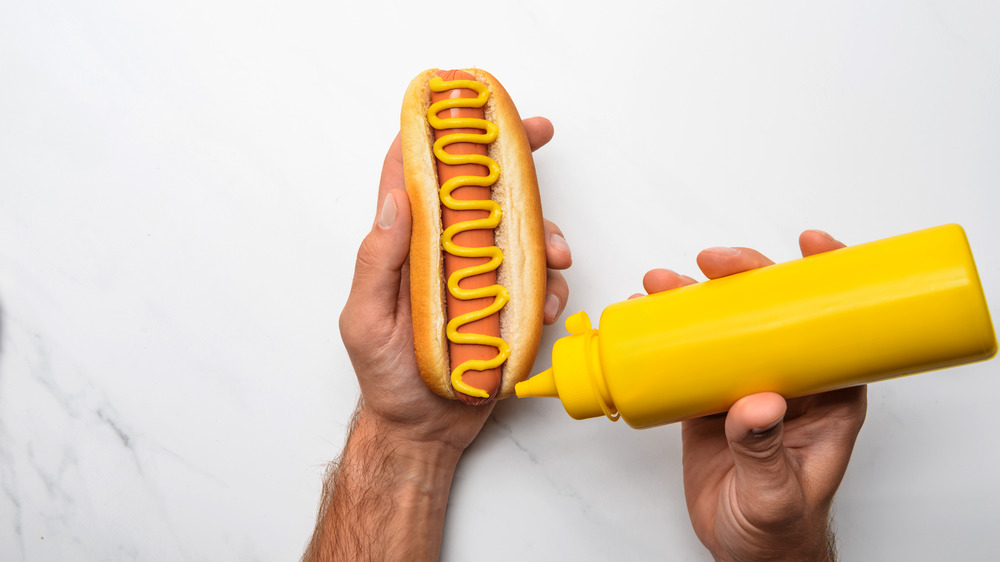The Real Difference Between Dijon Mustard And Yellow Mustard
Alongside ketchup and mayo, mustard is arguably one of the most popular condiments. Tangy and creamy, it's a staple at fast food restaurants, baseball stadiums, and backyard barbecues alike. A YouGov survey found that 72 percent of people in the U.S. eat it on their hot dogs and 50 percent eat it on their burgers. And according to First We Feast, Americans consume some 41.3 million pounds of mustard per year.
Walk down the condiment aisle at the grocery store, and between the bottles of French's, Heinz, and Grey Poupon, you'll quickly learn there are a lot of different types of mustard. While varieties range from honey mustard to spicy brown to stone ground, two of the most popular are yellow mustard and Dijon mustard. You may know that at first glance, the two styles look nothing alike — one is seedy and brown while the other is creamy and bright yellow — but you may not know exactly what sets the two apart. Here's how yellow mustard is different from Dijon.
Yellow mustard is made with different ingredients than Dijon
Yellow mustard and Dijon mustard don't just differ in appearance — they also differ in what they're made of. For starters, Dijon mustard is made with black mustards seeds while yellow mustard is made with white and yellow seeds, Foods Guy explains. This is what gives Dijon that slightly darker hue compared to yellow mustard's neon color.
If you've ever eaten both Dijon and yellow mustard, you're aware that they have very unique flavor profiles as well. This partly due to the seeds (black mustard seeds tend to have a spicier bite than the more mellow yellow seeds) but it's also due to one key ingredient difference. MyRecipes says that Dijon mustard is made with white wine, while yellow mustard is made with vinegar. Dijon actually used to be made with vinegar, as well, but that changed in the late 1850s and has since been most commonly made with wine.

